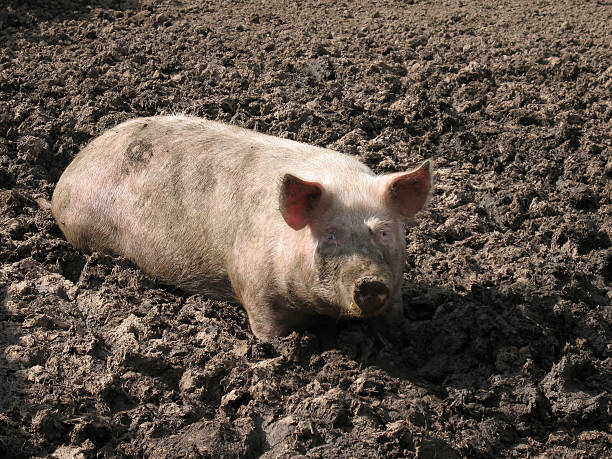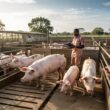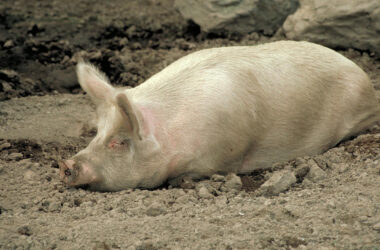Looking to dive into the agricultural sector in Kenya but not sure where to put your money? Pig farming might just be your golden ticket. The pork industry in Kenya has seen some serious growth over the past decade, with urban consumption jumping by a whopping 30%. But before you start building those pig pens, let’s break down what you’re really looking at in terms of investment, costs, and potential returns.
The Current State of Kenya’s Pig Farming Industry
The pig farming scene in Kenya isn’t just growing—it’s booming. With annual consumption estimated at over 300,000 metric tonnes, there’s a massive market waiting to be tapped. What’s even better? There’s currently a shortage of pigs in the market, creating a perfect storm of high demand and limited supply.
The Kenyan government has stepped up too, implementing policies that make entering this space more attractive than ever:
- Provision of veterinary services
- Subsidies on pig feed
- Establishment of pork processing facilities
This support system creates a runway for both newbies and veterans in the farming game to build profitable operations in this niche.
Initial Investment: What You’ll Need to Get Started
Starting a pig farm in Kenya isn’t something you can do with pocket change, but the initial costs are reasonable compared to other agricultural ventures. Here’s what you’ll need to budget for:
- Housing facilities: Proper shelters that protect your animals from extreme weather
- Breeding stock: Quality piglets or sows to start your farm
- Equipment: Feeding troughs, water systems, and basic farm tools
While the upfront costs might seem steep, remember—this is an investment in an operation that can generate consistent returns for years to come.
Breaking Down the Production Costs
Let’s talk numbers. The cost of raising a single pig to market weight in Kenya comes to approximately 18,830 Kenyan shillings per animal. Here’s how that breaks down:
| Expense Category | Cost (KSh) | Percentage of Total |
|---|---|---|
| Premium quality feeds | 14,830 | 78% |
| Labor, medication & misc. | 4,000 | 22% |
| Total per pig | 18,830 | 100% |
As you can see, feed is the heavyweight champion of expenses, gobbling up nearly 80% of your production costs. This underscores why efficient feeding strategies are crucial to maximizing your profits. Cutting corners on feed quality isn’t the way to go—instead, focus on optimizing feed conversion and minimizing wastage.
Revenue Streams: Where’s the Money Coming From?
Pig farming in Kenya offers multiple revenue channels, each with its own profit potential. Let’s break them down:
Meat Sales
You’ve got three main options when selling your pigs for meat, each with different profit margins:
- Local Slaughterhouse Sales: Currently fetching around 430 KSh per kilogram
- A 75kg pig generates 32,250 KSh (profit: ~13,420 KSh)
- An 85kg pig brings in 36,550 KSh (profit: ~17,720 KSh)
- Commercial Processors: Companies like Farmers Choice offer 330 KSh per kilogram
- A 75kg pig yields about 24,750 KSh (profit: ~5,920 KSh)
- An 85kg pig brings in around 28,050 KSh (profit: ~9,220 KSh)
- Direct Consumer Sales: The premium option at approximately 600 KSh per kilogram
- A 75kg pig can fetch 45,000 KSh (profit: ~26,170 KSh)
- An 85kg pig brings in about 51,000 KSh (profit: ~32,170 KSh)
Direct consumer sales clearly offer the juiciest profits, but they also require more work in terms of slaughtering, processing, and marketing. For many farmers, a mix of these channels provides the best balance between stability and profitability.
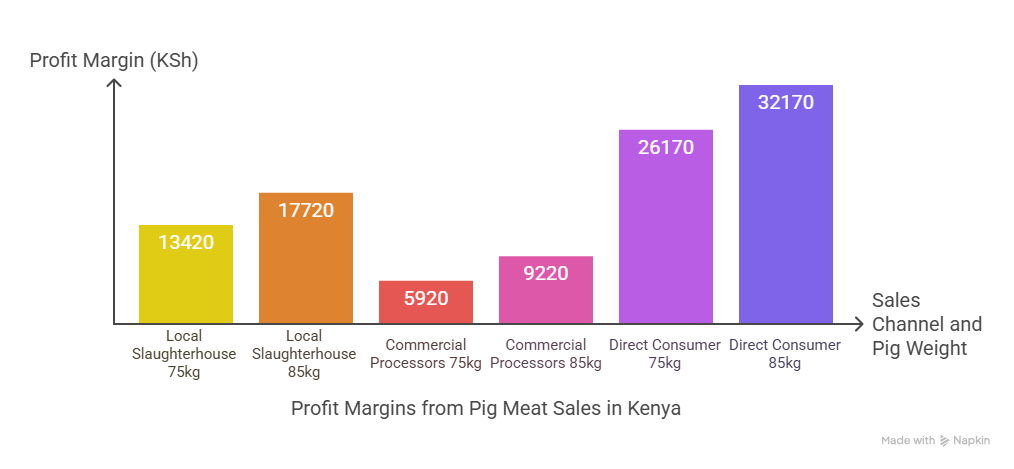
Breeding Stock Sales
This is where things get really interesting. Breeding stock sales represent a particularly profitable avenue, with pregnant sows selling for approximately 35,000 KSh each.
A single well-managed sow can produce between 10-12 piglets annually through two litters. At 3,500 KSh per weaned piglet, that’s 42,000-48,000 KSh annually just from offspring sales. The math doesn’t lie—breeding operations can be extremely lucrative.
Factors That Influence Profitability
Not all pig farms are created equal. Here are the key factors that separate the profitable operations from the struggling ones:
Production Efficiency
It all starts with quality breeds. Pigs that grow faster, convert feed more efficiently, and produce larger litters will significantly boost your bottom line. Proper housing systems and effective disease management are also crucial for maintaining high productivity and low mortality rates.
Feed Management
Since feed accounts for 78% of your production costs, this is where smart management can make or break your operation. Focus on optimized feed formulations that promote healthy growth while keeping expenses reasonable.
Well-fed pigs reach market weight in about 6 months, allowing for quicker returns on investment and more production cycles per year. That’s faster cash flow for your business.
Market Access and Value Addition
Having reliable buyers for your pigs is critical. Establish solid relationships with processors, wholesalers, retailers, or direct consumers to ensure consistent sales and favorable prices.
Want to take it up a notch? Consider value addition through processing pork into products like sausages, bacon, and ham. Processed products typically command higher prices than raw meat, potentially boosting your profit margins significantly.
Case Study: Starting Small and Scaling Up
Let’s make this concrete with a real-world example. Starting with just two pregnant pigs, a farmer can potentially raise 20 pigs to slaughter weight within seven months. At 70kg per pig sold at 16,000 KSh each, that’s a gross revenue of 320,000 KSh.
After deducting approximately 120,000 KSh in feeding costs, you’re looking at a profit of around 200,000 KSh in just seven months. That’s an impressive return that illustrates how even small-scale operations can generate significant profits when managed efficiently.
As you scale up, both profitability and efficiency typically improve. With more pigs, you can:
- Negotiate better prices for inputs
- Distribute fixed costs across more units
- Access more lucrative markets
Emerging Opportunities in Pig Farming
The pig farming sector in Kenya continues to evolve, creating new opportunities for innovative farmers:
Organic Pig Farming
As consumer preferences shift toward organic products, organic pig farming represents a growing trend. While organic production may involve different management approaches and potentially higher input costs, the premium prices commanded by organic pork can significantly enhance your profit margins.
Biogas Production
Pig waste can be converted into biogas for electricity generation and cooking, reducing on-farm energy costs while potentially creating another revenue stream through excess biogas sales. This integration of renewable energy production with pig farming showcases how innovative approaches can enhance overall farm profitability and sustainability.
Challenges to Consider
It’s not all smooth sailing in the pig farming business. Here are some challenges you’ll need to navigate:
Fluctuating Feed Prices
Feed prices can vary significantly, impacting your production costs and profit margins. Having a financial buffer and exploring alternative feeding strategies can help mitigate this risk.
Disease Outbreaks
Conditions like African Swine Fever can devastate pig populations if proper biosecurity measures aren’t implemented. Invest in preventive healthcare and maintain strict biosecurity protocols.
Market Limitations
Social and religious factors influence market dynamics in certain regions of Kenya where pork consumption may be limited. Do your homework on local market conditions before establishing operations.
Environmental Regulations
Waste management regulations are increasingly important considerations. Implement proper effluent handling systems to comply with regulatory requirements and maintain good community relations.
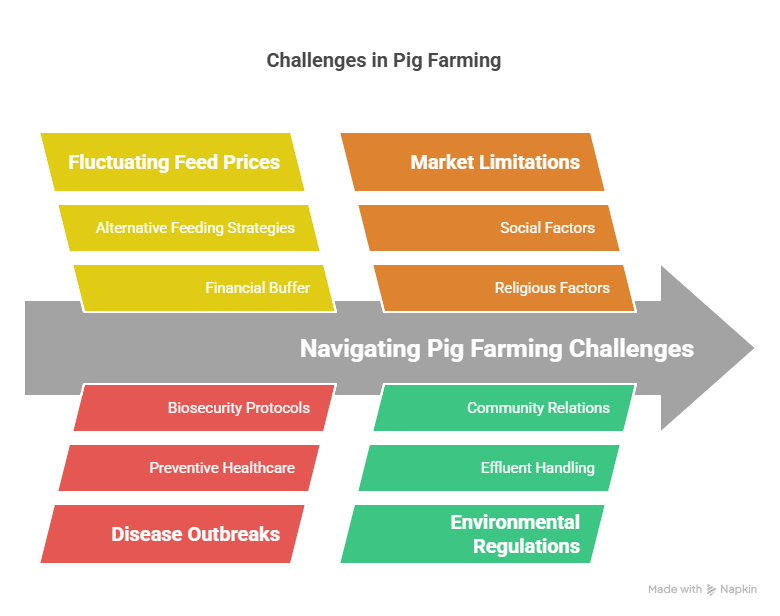
The Bottom Line: Is Pig Farming Profitable in Kenya?
The short answer is a resounding yes—pig farming in Kenya is a profitable venture when implemented with proper management practices and strategic marketing approaches. With profit margins ranging from 5,920 KSh to 32,170 KSh per pig depending on your sales channel, the potential returns are substantial.
The biological efficiency of pigs—quick reproduction cycle, large litter sizes, rapid growth rate, and excellent feed conversion ratio—creates favorable conditions for both new entrants and established farmers to achieve significant returns on investment.
As Kenya’s pork consumption continues to grow, particularly in urban areas, pig farming represents an increasingly attractive agricultural investment. With careful planning, efficient management, and adaptive marketing strategies, you can establish a profitable pig farming enterprise that contributes to both personal income generation and the broader agricultural economy of Kenya.
Ready to start your pig farming journey? The market is waiting, and the profits are there for the taking!
Did you find this analysis helpful? Are you considering pig farming in Kenya? Share your thoughts and questions in the comments below!




